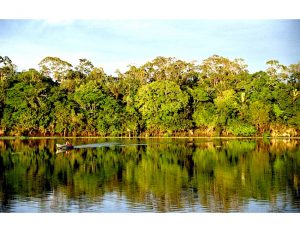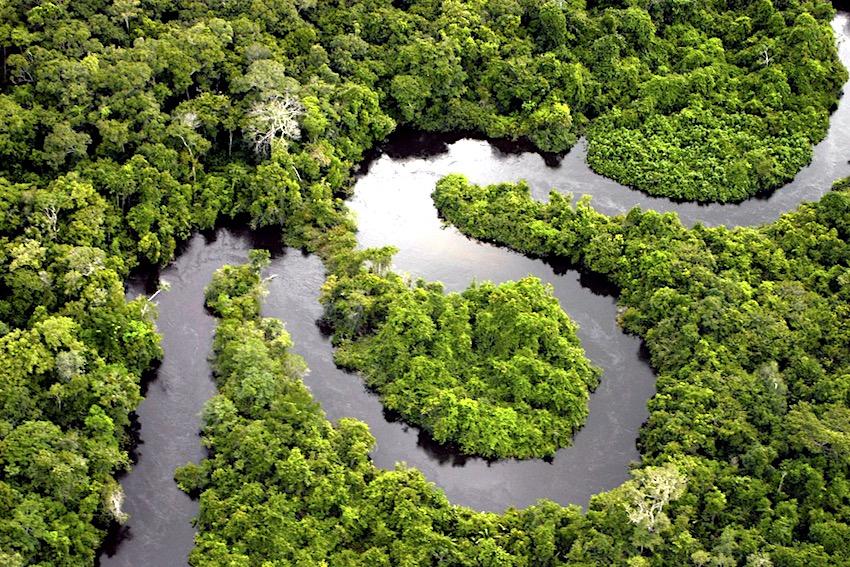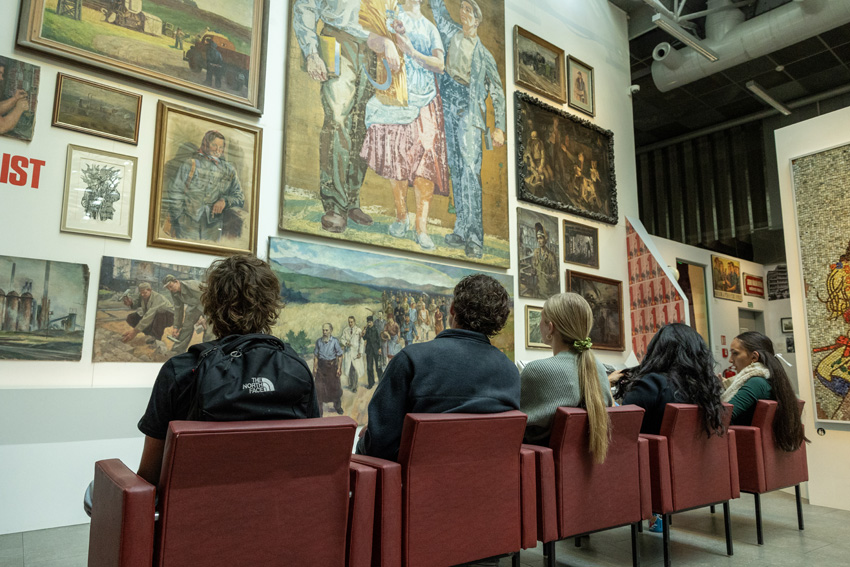Brazilian citizen and senior international student Laura Rauscher explores the fires and decimation of the Amazon rainforest in her following Feather article.
The Amazon Rainforest (Amazônia) is the largest rainforest in the world, covering an area almost two thirds the size of the United States. However, the biggest biodiversity of the planet is prone to burn.

This biome is home to the richest biodiversity on the planet with over 2,000 animal species including poison dart frogs and Amazon river dolphins. The Amazon is not just a diverse home of plants and animals. According to the National Indian Foundation (FUNAI), it is also home to about one hundred indigenous tribes.
With this in mind, The Amazon Fund, an international project to fight deforestation in the Amazon, was started. Germany and Norway are its main sponsors. These two countries have been funding money to preserve and protect the Brazilian forest since 2008.
Despite the strides made for the well being of the forest, this biome is losing 78 million acres of rainforest per year and is extremely susceptible to forest fires. Though the fires haven’t made headline news in Brazil, it is estimated that 17 percent of the Amazon forest has vanished over the last 50 years.
According to Raintree, “We are losing Earth’s greatest biological treasures just as we are beginning to appreciate their true value. Rainforests once covered 14 percent of the earth’s land surface; now they cover a mere 6 percent and experts estimate that the last remaining rainforests could be consumed in less than 40 years.”
Between 15 and 17 percent of the Brazilian rainforest has been burned and lost. According to VOX, the latest results show that deforestation increased nearly 30 percent between August 2018 and through July 2019 compared to the 12 months prior.
@nagsenk tweeted a post towards the amazon catching on fire during 1980s decade.
The destruction of the #AmazonRainForest, Explained#VoxAtlas#SaveAmazonRainForesthttps://t.co/FcXJcabAyz
— Nagsen (@nagsenk) November 21, 2019
The 2019 events go beyond deforestation ; they are fires off until now unseen proportions causing immeasurable damage. These fires are directly related to the continued encroachment of agricultural, residential and industrial activity on the remaining natural landscapes.
As such, be these encroachments legal or otherwise, pressure is increased on watersheds and their abilities to naturally mitigate the impact caused.
Forests, savannas and other biomes are living organisms that many times rely on naturally-set fires for renovation and seeding.
There is not a sure answer to as to why the fires originally started, but according to investigators at The National Institute for Space Research (INPE), the Amazon fires are directly related to the continued encroachment of agricultural, residential and industrial activity on the remaining natural landscapes. INPE, also known as the Brazilian NASA, monitors the Amazon by satellite, allowing the public free access to their website. Starting from 2018 August until July 2019, INPE reports that there was a over 40% of deforestation alert.
Ricardo Galvão, INPE’s director and professor of the physics institute at the University of São Paulo started his career at INPE in 1970. According to Galvão, INPE has the largest historical database on deforestation of tropical forests. In July 2019, INPE stated that 920.4 square km were deforested and subsequently issued an alert in July pointing towards an 40 percent increase in historical deforestation.
[media-credit id=139 align=”alignright” width=”232″] [/media-credit]
[/media-credit]
Therefore, there are some investigations that say the main cause of the fires are the farmers who want to clean the area after the harvest or either deforestation on area.
The Brazilian Forestry Code allows “slash and burning” under controlled conditions, if proper licensing procedures are followed. First slashing called “correntão” or the “big chain” is done by two tractors connected to a thick chain which knocks down all the trees in their way. The forest that has been knocked down is left to dry.
Once dry, usually during the dry season, the areas are set on fire. Only after all vegetation has been burned is it then possible to sow grass that the cattle are going to graze on.
The challenge is that the fires often blow over to standing forests which, if dry, may also be set on fire; this is possibly the main reason for the blaze in the Amazon during 2019.
Ricardo Salles, Brazilian Minister of the Environment, reiterated that fires are common during the winter season due to the dry conditions. However, after a visit to the Brazilian state of Mato Grosso, he ventured the hypotheses that some fires may also have been intentionally set.
Brazilian President Jair Bolsonaro echoed this possibility and went further as to suggest that NGOs could also be involved. He ordered an investigation of NGO’s that donate money to make sure this was not the case and to clear the possibility up and then decreed a sixty-day ban on legally-set fires.
In the article, Amazon fires: What’s the latest in Brazil?, written b
According to Søren Knudsen, resident of SKG/Sustainable Solutions, there is a crucial balance point in all forestry systems that lead to desertification. The best example of this is the American Dust Bowl.
“Thousands of families were driven off their land in the Midwest due to desertification caused by poor soil management and an extended draught,” Knudsen said. “It caused massive migrations from the rural to the urban settings, causing poverty, loss and decreased productivity and extreme social turmoil.”
The Dust Bowl occurred by 1930s while a dust storm swept the region from Texas to Nebraska. The Dust Bowl had many different causes by several economic and agricultural factors, including federal land policies, changes in regional weather, farm economics and other cultural factors.
“The desertification pattern is a standard one,” Knudsen said. “First the land is cleared, then cattle is put on the unprotected soil and finally harvestable crops are planted, such as soybeans in Brazil’s case. The tropical forest soil is not suited for any of these activities and therefore lose their economic attractiveness and usefulness after being farmed intensively for a few years.”
In the following podcast, senior Laura Rauscher interviews Søren Knudsen the president of Sustainable Solutions about the Amazon fires.
Senior Rebekah Micu talks about how she felt when she heard about the massive fires located on Brazil.
“When I saw the news that the Amazon fires were being a huge catastrophic in Brazil, me and my parents were very upset,”Micu said.”I went to Brazil a couples years ago and me and my brothers were very touched about the Brazilian culture and the country overall. However the Brazilian fires should stop as soon as possible because Isn’t just affecting them but all of us.”
According to BBC news, the Amazon isn’t just the only thing Brazil should be concerned The Cerrado savanna located in another region in Brazil also known as “one of the most endangered ecosystems on the planet” has been having more fires there than the Amazon last month.
The Cerrado is one of the most biodiverse areas in the world – about 40 percent of the animal and plant species there can’t be found anywhere else on the planet. But, according to the Amazon Environmental Research Institute (Ipam) about half the forests, wetlands, woods and grasslands there have already been lost – much of it to make way for soybean farming.
Paulo Bernardo college student from Brasiliense Institute of Public Law shares how the Amazon Fires that has been affecting all the Brazilians.
“For Brazilians in general the impact that had greatest irrelevance was the image of the government both nationally and internationally,”Bernardo said. “A government that despite having one of the best environmental policy acted negligence with what happened showing itslef once again to be permissed with agrarian issues.”
In the following podcast, Laura Rauscher speaks with college student Paulo Bernardo about the fires in his native country.
Therefore, the Amazon fires it may be concluded that no amount of government control or NGO action will curtail future fires. Uncontrolled population growth, unbridled expansion of agricultural frontiers, impacted climate patterns all contribute to the events witnessed planet-wide in 2019. These are all just symptoms of a bigger challenge. One needs to look for the root cause to find a possible answer. A good place to start may be: Too many people chasing the planets finite natural resources.
For more articles, read COLUMN: Architecture focus drives service dreams, reflects social change and Coronavirus spreads across the globe, public health threatened.
Laura Rauscher can be reached via Twitter.





ANNA MENEZES • Mar 22, 2020 at 6:53 am
Amazing article about our Amazon Forest. Congratulations Laura. You clarify even more the importance to the preservation our Forest. The collaboration of Soren Knudsen gave us a real perspective, Thanks both. I am so proud of you.
Micah Friesen • Mar 5, 2020 at 8:47 am
I love what u did and thank you telling me and the world about the fires and how much it is effecting the rainforests. pretty crazy how fast we lose nature and not to many people do anything, expecting others to do something. Thanks for spreading awareness, amazing article